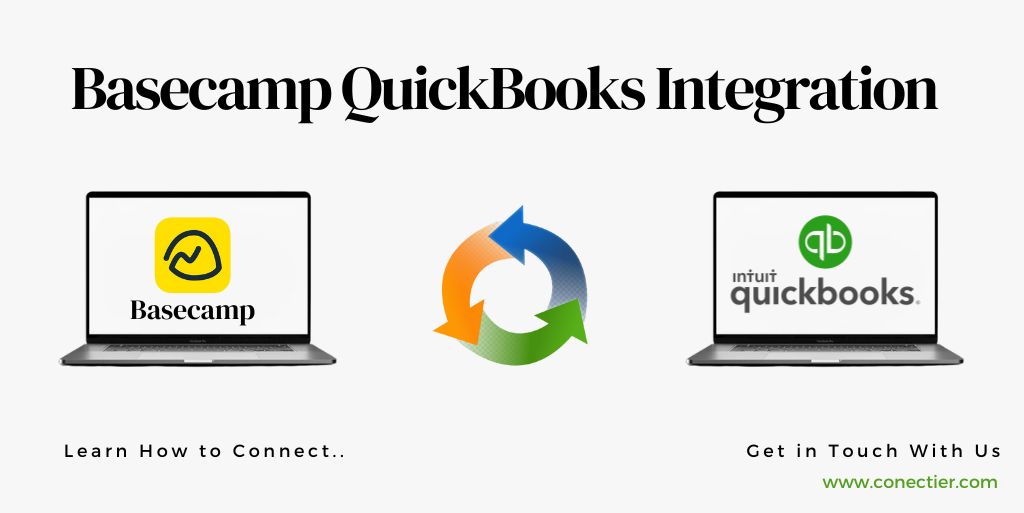Basecamp QuickBooks integration enables seamless synchronization of projects and accounts. This feature facilitates efficient financial management and project tracking. Users can effortlessly send invoices from Basecamp to QuickBooks, create estimates, and link payments between platforms. In addition, detailed financial data for Basecamp projects is easily accessible. This integration greatly simplifies operations and financial monitoring.

In this blog, we will explore the benefits of integrating Basecamp with QuickBooks, the step-by-step process to set it up, advanced features, best practices, and troubleshooting common issues.
- What is Basecamp?
- What are the Benefits of Basecamp QuickBooks Integration?
- How to Integrate Basecamp with QuickBooks?
- What are the Advanced Features of Basecamp QuickBooks Integration?
- What are the Best Practices for a Basecamp QuickBooks Integration?
- What are the Troubleshooting Common Basecamp QuickBooks Integration Issues?
What is Basecamp?
Basecamp is a tool many teams use to work together and manage projects. QuickBooks is popular accounting software that helps businesses handle their finances well. When you combine Basecamp with QuickBooks, you can make it easier to manage projects and financial data at the same time, which makes work smoother and productive.
What are the Benefits of Basecamp QuickBooks Integration?
Basecamp QuickBooks integration offers a wide range of benefits for businesses of all sizes. Some of them are as follows:
- Save time and effort by automating tasks.
- Improve collaboration among team members by sharing project updates and financial data easily.
- Increase efficiency by eliminating manual data entry and reducing errors.
- Keep data up-to-date with real-time synchronization between Basecamp and QuickBooks.
- Save money and resources with a cost-effective integration that reduces manual data transfer and human errors.
How to Integrate Basecamp with QuickBooks?
Basecamp QuickBooks integration steps are very simple and require no coding whatsoever. Follow these steps to set up the integration:
- Log in for an Integration Platform
- Choose an integration platform like Zapier or Appy Pie Connect that supports Basecamp and QuickBooks Online.
- Authenticate Basecamp and QuickBooks
- Connect your Basecamp and QuickBooks accounts to the integration platform.
- Choose Triggers and Actions
- Select triggers and actions for the integration, like creating a new task in Basecamp when a new invoice is generated in QuickBooks.
- Map Data Fields
- Map relevant data fields between Basecamp and QuickBooks for smooth data transfer.
- Test and Activate the Integration
- Test the integration with a sample task and activate it for automated workflow.
What are the Advanced Features of Basecamp QuickBooks Integration?
Basecamp QuickBooks integration offers advanced characteristics that can further enhance your workflow automation. Let’s see some of them.
- Multi-step Workflows: Zapier offers complex automation with multiple triggers and actions.
- Custom Triggers and Actions: Integration platforms allow custom triggers and actions based on your needs.
- Conditional Workflows: Set up workflows triggered by specific conditions.
- Real-time Syncing: Ensure data syncs instantly between Basecamp and QuickBooks with integration platforms.
What are the Best Practices for a Basecamp QuickBooks Integration?
To ensure a smooth and successful integration between Basecamp and QuickBooks, follow these guidelines.
- Set Clear Integration Goals: Define your needs, data to sync, triggers, and desired outcomes before integration setup.
- Choose Relevant Triggers and Actions: Select suitable triggers and actions aligning with your integration goals. For instance, creating a Basecamp task when a new customer is added in QuickBooks.
- Ensure Accurate Field Mapping: Match data fields correctly between apps to ensure precise data transfer and avoid errors.
- Thoroughly Test: Test integration with sample data to verify the functionality before activation.
- Regularly Monitor and Maintain: Keep an eye on integration, error logs, and promptly resolve issues.
- Stay Organized: Use descriptive names and labels for efficient integration management.
- Keep Apps Updated: Stay current with Basecamp, QuickBooks, and the integration platform for seamless operation and new features.
- Seek Support if Needed: Reach out to support teams for guidance or assistance during integration.
What are the Troubleshooting Common Basecamp QuickBooks Integration Issues?
While setting up and maintaining the Basecamp QuickBooks integration, you may encounter some common issues. Here are the steps to rectify them:
- Integration Issue:
- Check setup and permissions, ensure correct triggers and actions. Try reconnecting apps to the integration platform if needed.
- Data Not Syncing:
- Review triggers, actions, and field mapping for accurate data transfer. Monitor integration performance for consistent syncing.
- Duplicate Entries or Missing Data:
- Adjust field mapping and settings to resolve duplicates or missing data. Sync only necessary data to avoid clutter.
- Errors or Crashes:
- Look for updates or changes in Basecamp, QuickBooks, or the integration platform. Seek support from respective teams if needed.
- Integration Stopped Working:
- Reconfigure integration if necessary, or seek support from the platform or app teams if it suddenly stops.
Basecamp and QuickBooks integration can revolutionize your workflow, enhancing collaboration and boosting productivity in both project management and accounting. By automating tasks and synchronizing data between these powerful tools, you can streamline operations, reduce manual effort, and make better-informed decisions.
Frequently Asked Questions
Yes, Basecamp can be integrated with QuickBooks using integration platforms like Appy Pie Connect and Zapier.
Integrate Basecamp with QuickBooks: Sign up, authenticate accounts, choose triggers and actions, map data fields, test, and activate.
Basecamp QuickBooks integration offers, multi-step workflows, custom triggers, conditional workflows, and real-time data syncing.
Define goals, select triggers/actions, map fields accurately, test thoroughly, monitor regularly, stay organized, update apps, seek support if needed.
Common issues with the integration include the integration not working as expected, data not syncing between apps, duplicate entries or missing data, errors or crashes, and the integration stopping working altogether.
Basecamp QuickBooks integration saves time, streamline workflows, improves collaboration, and increases efficiency.

